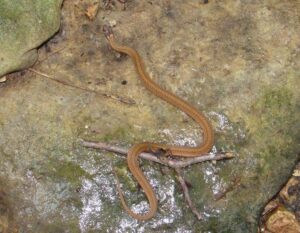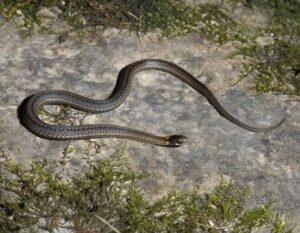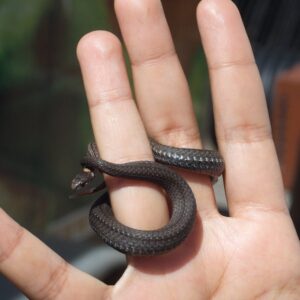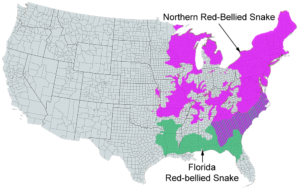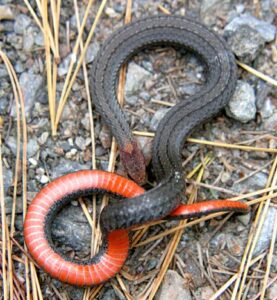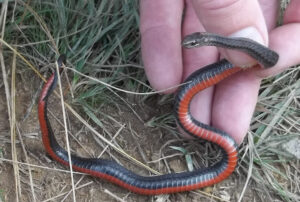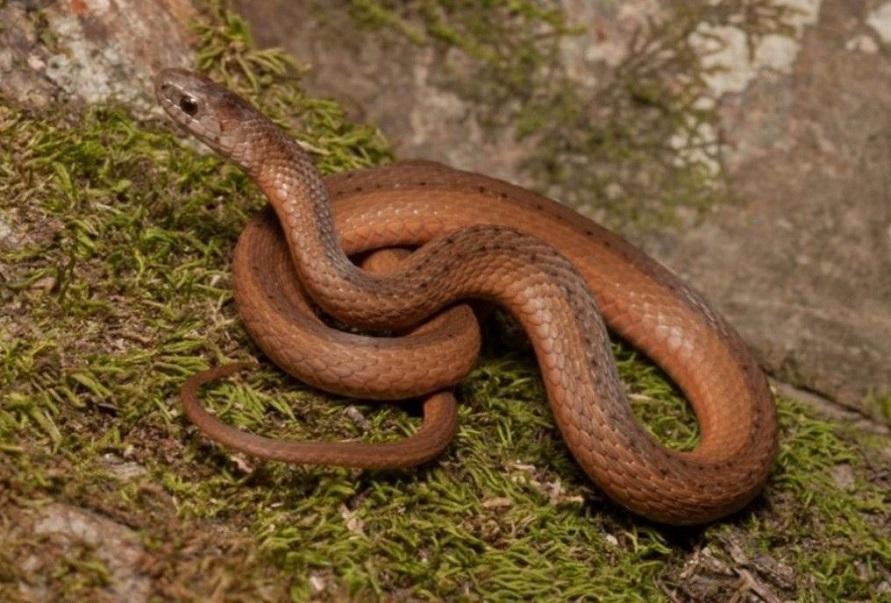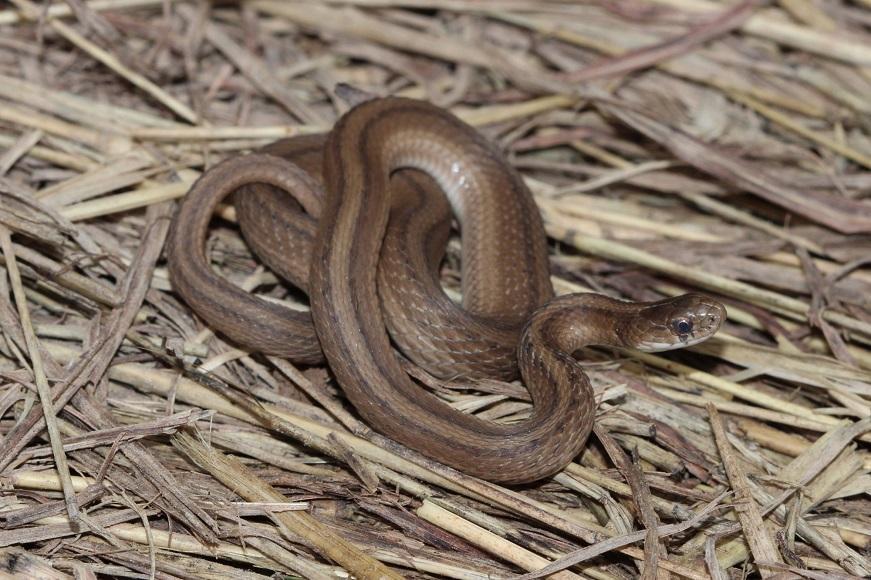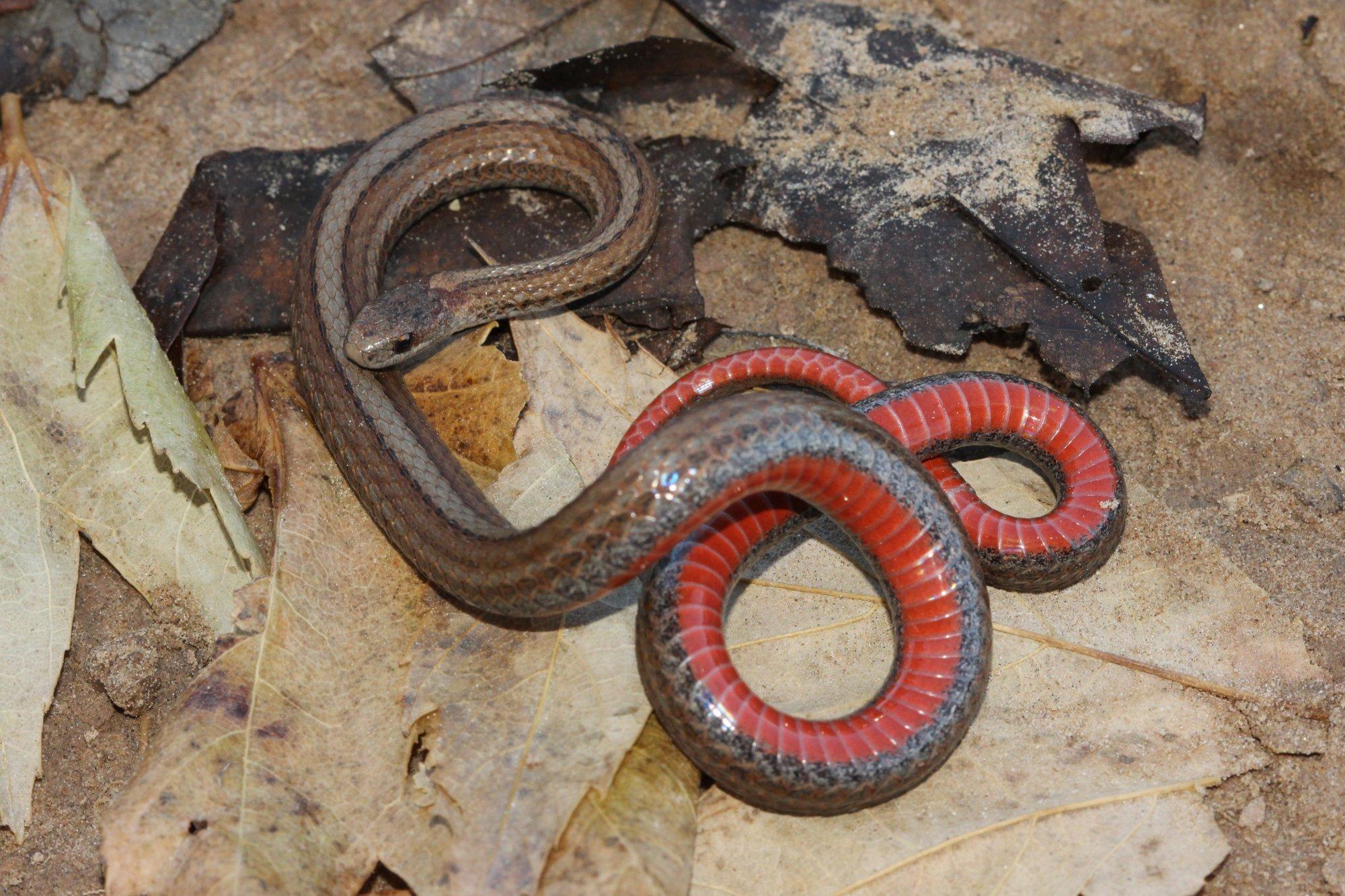Northern Redbelly Snake (Storeria occipitomaculata occipitomaculata)
Updated on
25/01/2023The northern redbelly snake is a subspecies of the redbelly snake. It is also known as the fire snake and northern red-bellied snake. The small, secretive snake is active from May to October. It usually remains under cover during the day and emerges in the evening to stay active throughout the night.
Scientific Classifications
- Suborder:Serpentes
- Family:Colubridae
- Genus:Storeria
- Species:S. occipitomaculata
- Subspecies:S. o. occipitomaculata
Conservation Status
Description
Size
The adults grow to a size of about 12 in (31 cm) in total length (including the tail).
Color and Appearance
The dorsal color is solid tan-brown, olive-brown, grey-brown, chestnut-brown, gray, or black. There are three yellow spots behind their head shields which are referred to by their specific name occipitomaculata that means spotted back of the head. The snake has a coral-red to brick-red underside. The coloration consists of three different shades that give rise to a striped pattern. The scales are keeled, and the loreal scale is absent. Some individuals have 3 black dots on top of the head.
Are They Dangerous to Humans
When captured or handled, they don’t try to bite but may emit musk from a pair of glands located at the base of their tails. Some may curl their upper “lips” outward, showcasing tiny teeth. But being non-venomous, they are harmless.
Northern Redbelly Snakes at a Glance
Distribution
The species is widely distributed in the eastern US and southern Canada, from Nova Scotia to northern Florida, westward to extreme eastern Saskatchewan and southern Manitoba, northeastern North Dakota, and the extreme east of South Dakota, Oklahoma, Kansas, and Texas.
Habitat
The northern red-bellied snake inhabits moist gardens, flowerbeds, and woodlands that form the borders between forests and wetlands.
The snake often rests under rocks and logs near forests and woods. It sends winters in unused rodent burrows and anthills.
Lifespan
They live for up to 4 years in captivity.
Predators
They are eaten by squirrels, birds, other snakes, and large toads and frogs.
Diet
Slugs and earthworms are their primary diet. They also eat beetle larvae and insects.
Reproduction
Viviparous (gives birth to live young)
They mate in spring and early summer. A female gives birth to 7-8 live young in a litter between late July and early September. The newborns measure 3-4.3 in (7.6-11 cm) in total length and look like the adults.
Source
education.mdc.mo.gov, quoracdn.net, virginiaherpetologicalsociety.com, lh6.ggpht.com,

